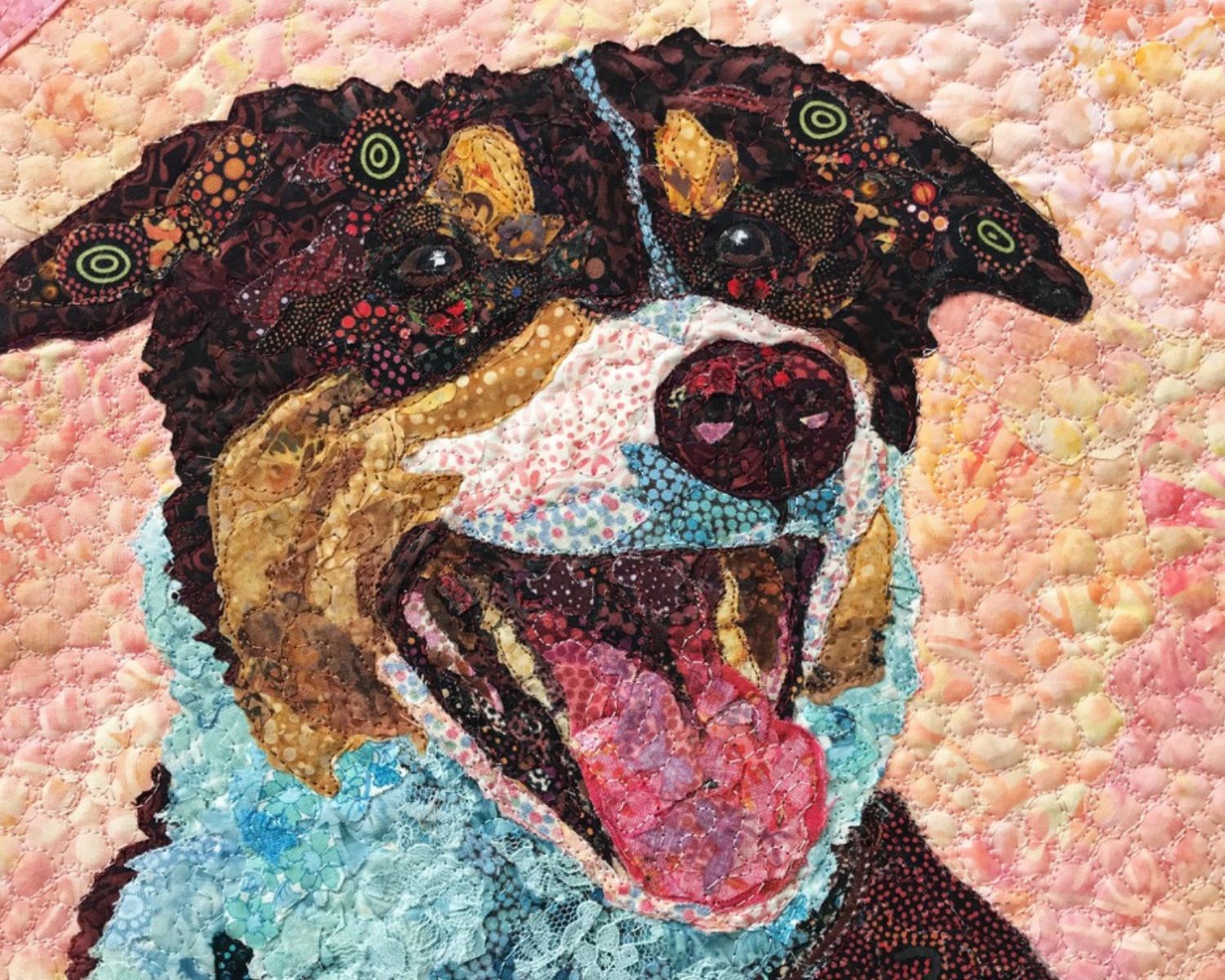
Collage quilting is a fascinating and intricate art form that has gained popularity in recent years. Combining the techniques of quilting and collage, this unique approach to creating textile masterpieces has taken the world by storm. With its endless possibilities for creative expression, collage quilting allows artists to merge various fabrics, patterns, and textures to produce visually stunning and one-of-a-kind designs.
In this article, we will dive into the enchanting world of collage quilting and discover 14 extraordinary facts that will leave you inspired and in awe of this mesmerizing craft. From its origins to its modern-day applications, we will explore the history, techniques, and remarkable works of art that showcase the versatility and beauty of collage quilting.
Key Takeaways:
- Collage quilting is a unique art form that combines traditional quilting with collage-making, allowing for endless creativity and individual expression through fabric, color, and texture.
- Collage quilting encourages environmental sustainability by incorporating recycled fabrics and repurposed materials, contributing to a more eco-friendly approach to quilting.
Collage quilting is a unique art form that combines traditional quilting techniques with collage-making.
Collage quilting involves assembling fabric pieces of different colors, patterns, and textures to create a visually stunning quilt. The combination of fabrics creates a beautiful patchwork effect.
The origins of collage quilting can be traced back to the mid-20th century.
As a response to the modern art movement, artists began experimenting with collage techniques in quilting. They started incorporating non-traditional materials such as newspaper clippings, photographs, and even recycled fabrics into their quilts.
Collage quilting allows for endless creativity and individual expression.
Unlike traditional quilting, where precise piecing and repetitive patterns take center stage, collage quilting empowers artists to explore their artistic sensibilities. They can create unique and personal designs that reflect their own style and personality.
The use of color plays a crucial role in collage quilting.
Artists carefully select fabric pieces based on color theory, creating harmonious or contrasting color combinations. This strategic use of color adds depth and dimension to the quilt, making it visually captivating.
Collage quilting is not limited to fabric alone.
Artists often incorporate other elements such as buttons, beads, ribbons, and even found objects into their quilts. These additions enhance the texture and visual interest of the artwork.
The theme of a collage quilt can vary greatly.
From nature-inspired designs to abstract compositions, collage quilting allows artists to explore a wide range of themes. Each quilt tells a unique story through the arrangement of fabric pieces and additional embellishments.
Collage quilting is a time-consuming process.
Creating a collage quilt requires careful planning, cutting, and arranging of fabric pieces. The meticulous attention to detail ensures that every element of the quilt is thoughtfully placed.
Collage quilts can be both decorative and functional.
While some collage quilts are meant to be displayed as artwork, others serve practical purposes. Functional collage quilts can be used as bed covers, wall hangings, or even transformed into clothing items.
The versatility of collage quilting allows for experimentation with different techniques.
Artists can incorporate various quilting methods like appliqué, embroidery, or free-motion quilting to further enhance their collage quilts. This fusion of techniques adds depth and texture to the artwork.
Collage quilting is gaining popularity in the art and quilting communities.
More and more artists are embracing this innovative technique, pushing the boundaries of traditional quilting and creating stunning works of art that blur the line between quilting and fine art.
Collage quilting can be a therapeutic and meditative practice.
The slow and deliberate process of collage quilting allows artists to immerse themselves in the creative experience. It provides a sense of calm and relaxation, making it a popular choice for those seeking a creative outlet.
Collage quilting workshops and classes are widely available.
For those interested in learning the art of collage quilting, there are numerous resources available. Workshops, online tutorials, and quilting groups offer opportunities to expand skills and connect with fellow artists.
Collage quilts can be exhibited in galleries and museums.
As collage quilting gains recognition as a legitimate art form, more institutions are showcasing these works in exhibitions. This recognition further validates the artistic merit of collage quilting.
Collage quilting encourages environmental sustainability.
By incorporating recycled fabrics and repurposed materials into their quilts, artists contribute to a more sustainable and eco-friendly approach to quilting. This practice aligns with the growing emphasis on reducing waste and embracing sustainability in art.
Conclusion
In conclusion, collage quilting is a truly unique and fascinating art form that offers endless possibilities for creativity and self-expression. With its combination of fabric, color, texture, and design, it allows quilters to create extraordinary pieces that capture attention and tell stories.Whether you are a seasoned quilter or new to the craft, collage quilting invites you to experiment, play, and push boundaries. From using unconventional materials to incorporating personal mementos, this technique encourages you to think outside the box and embrace your imagination.By incorporating these 14 extraordinary facts into your quilting journey, you can unlock new levels of inspiration and skill. So, grab your fabric scraps, scissors, and sewing machine, and embark on a collage quilting adventure that will leave you with truly one-of-a-kind masterpieces.
FAQs
1. What is collage quilting?
Collage quilting is a technique that involves using a variety of fabric shapes and patterns to create a unique design. Instead of traditional piecing, fabrics are cut and arranged to form a picture or scene.
2. Do I need to have sewing experience to try collage quilting?
No, collage quilting is suitable for both beginners and experienced quilters. While basic sewing skills are helpful, the focus is more on creativity and experimentation rather than precise stitching.
3. What materials do I need for collage quilting?
You will need a variety of fabric scraps, fusible webbing, scissors, an iron, and a sewing machine. Additionally, you may also want to have a cutting mat, rotary cutter, and fabric glue handy.
4. Can I use unconventional materials in collage quilting?
Absolutely! Collage quilting encourages the use of unconventional materials such as ribbons, lace, buttons, beads, and even recycled fabrics or clothing items.
5. How do I create depth and texture in my collage quilts?
You can add depth and texture to your collage quilts by layering different fabrics, using different weights and textures, and adding embellishments such as embroidery or appliqué.
6. Are there any specific techniques or tips for collage quilting?
While there are no strict rules, it’s helpful to start with a rough sketch or plan, use contrasting colors and patterns, and experiment with different arrangements before committing to a final design.
7. Can I incorporate personal elements into my collage quilts?
Absolutely! Collage quilting allows you to incorporate personal mementos such as photographs, letters, or small keepsakes into your design, making it even more meaningful and personal.
8. Are there any famous collage quilters I can draw inspiration from?
Yes, renowned artists such as Laura Heine, Susan Carlson, and Emily Taylor are known for their incredible collage quilting creations. Exploring their work can provide inspiration and ideas for your own projects.
9. Can collage quilting be combined with other quilting techniques?
Definitely! Collage quilting can be combined with other quilting techniques such as appliqué, patchwork, or quilting. It opens up endless possibilities for incorporating different styles and elements into your designs.
10. Where can I find resources and tutorials for collage quilting?
There are numerous websites, blogs, and online communities dedicated to collage quilting. You can find step-by-step tutorials, video guides, and helpful tips from experienced quilters to get you started on your collage quilting journey.
Was this page helpful?
Our commitment to delivering trustworthy and engaging content is at the heart of what we do. Each fact on our site is contributed by real users like you, bringing a wealth of diverse insights and information. To ensure the highest standards of accuracy and reliability, our dedicated editors meticulously review each submission. This process guarantees that the facts we share are not only fascinating but also credible. Trust in our commitment to quality and authenticity as you explore and learn with us.


